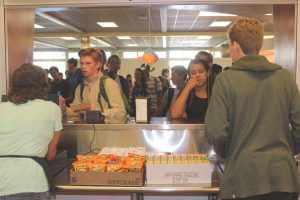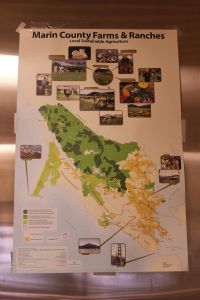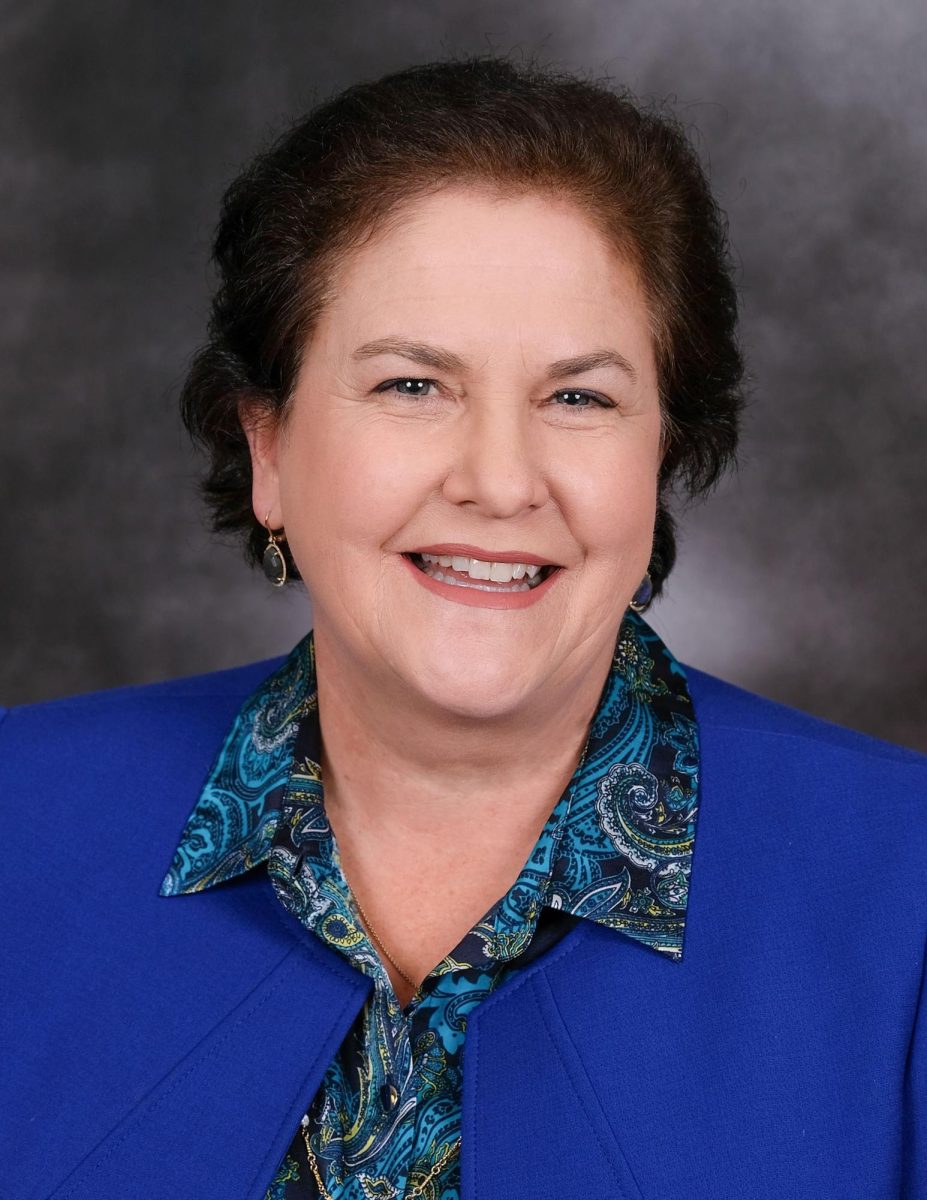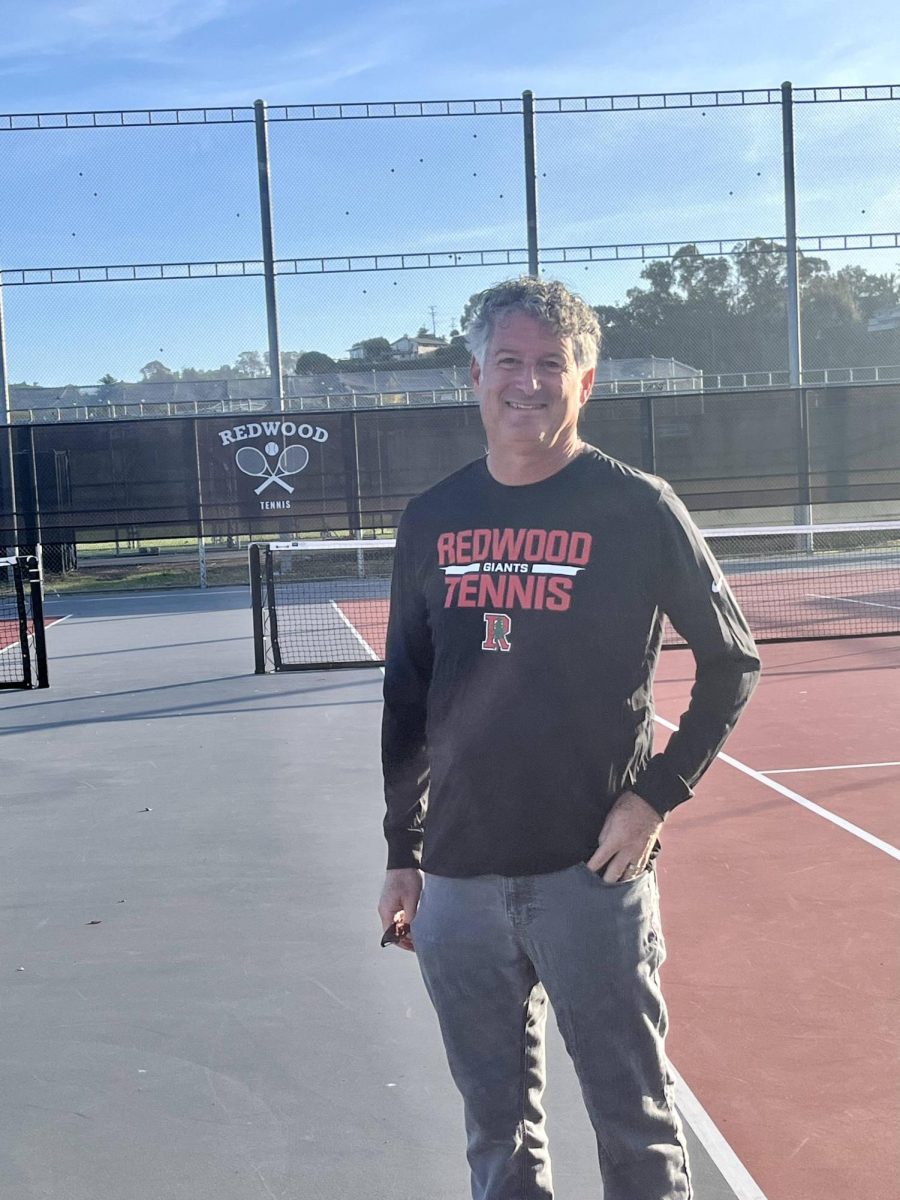In August, the Sausalito Marin City School District became the first in the nation to serve all non-GMO and organic foods in their cafeterias.
Though not quite as dramatic a shift, the Redwood Covered Eating Area, also known as the school cafeteria or CEA, has also experienced many changes in food quality, menu items, and eco-friendliness.
Becky Lamet, a Nutritional Food Service staff member, has been working in the CEA for 12 years.
“It’s really an exciting time in which we are able to transition into providing purer ingredients for students,” Lamet said.
Elena Dibble has been the Director of Student Nutrition Services for the Tamalpais Union High School District since Aug. 2014. She and her colleagues have been working to shift the CEA’s food toward healthier, organic, non-GMO options for students.

“We try and use local vendors as much as possible,” Dibble said. “We use Clover Stornetta, Redwood Bagel Company, and our produce companies are out of Milpitas but they source locally as much as they can.”
Dibble noticed the gradual change toward providing healthier menu options when she first began working in the district.
According to Dibble, the issue doesn’t lie in whether or not the CEA can provide organic and non-GMO products––it’s whether or not students would be willing to pay higher prices for the food.
“We try and source organic [produce] when possible and we try and source non-GMO, but we also have to keep things affordable for students,” Dibble said.
Lamet said the CEA management tried going completely organic before, but the cost of buying organic produce was too expensive and the change in taste wasn’t noticeable enough.
“[The students] had no idea it was organic,” Lamet said.
Though buying all organic produce and foods proved too expensive, the CEA is still trying to move toward healthier meal options.
In 2012, the CEA began selling organic Three Twins Ice Cream, organic produce, and yogurt.
Although Dibble works closely with the CEA management and student groups to provide the best menu choices, it’s been challenging to keep meals within the budget and also compliant with state regulations.
The food in the CEA is both federally and state funded, so Dibble and her management must abide by both the federal and state health laws.
“For the lunch, we have to have certain components for it to qualify. For example, we can’t serve a meal without milk––it has to come as a combo,” Dibble said.
Because the CEA is mandated to follow certain health department laws, they often cannot keep much of their leftover food.
“A lot of times we don’t have excess food. If it’s something that we can’t reuse, we have to throw heated food away,” Dibble said. “That’s Health Department law, that you can’t reserve food like that.”
However, even with many regulations and restrictions, the CEA works to include new menu items when possible.

“The menu doesn’t change a lot, but we always try and bring new foods in,” Dibble said. “I like to frequent local restaurants to see what the trend is––that’s one of the reasons we brought in Three Twins Ice Cream.”
According to Dibble, finding non-GMO and organic products is easier now than it was three or four years ago, which has helped the CEA transition toward healthier options.
Along with becoming healthier, the CEA food has also become more expensive. Wage increases for employees and raised food prices have driven up the cost of food in the CEA.
“There was a price increase in our breakfast and lunches [this year]. We hadn’t had a price increase in six years,” Dibble said. “I’m hoping there won’t be a price increase next year since we already raised the prices this year.”
In efforts to keep the food as fresh as possible, the CEA staff cooks a majority of its food from scratch.
“For the rice bowls we make the rice in the mornings, [and] heat up the meat. We make all the pastas from scratch, sandwiches and salads are made daily, and our veggie sides are made daily,” Dibble said. “It’s all made and heated that day.”
According to senior Chris Berreman, fourth year CEA employee, the biggest changes the CEA has undergone have been menu-related.
“I think the menu changes are made with good intentions, but it’s definitely decreasing the popularity of the CEA, and it’s not really what the kids want,” Berreman said.
According to Berreman, though using wooden utensils and boxed water is a positive step in the right direction in saving the environment, it’s not what students want.
However, to avoid wasting food, the CEA has determined how much of each product to serve each day by analyzing trends in food purchasing.










